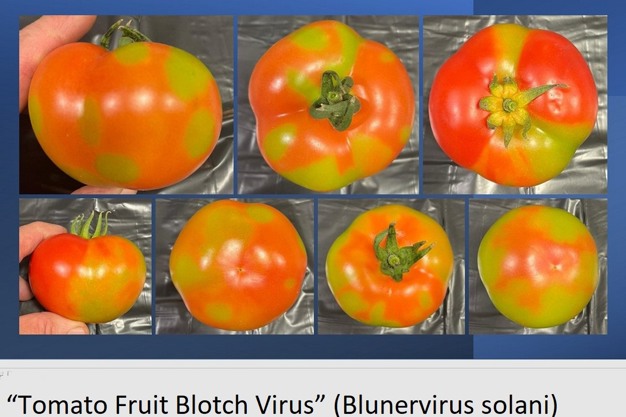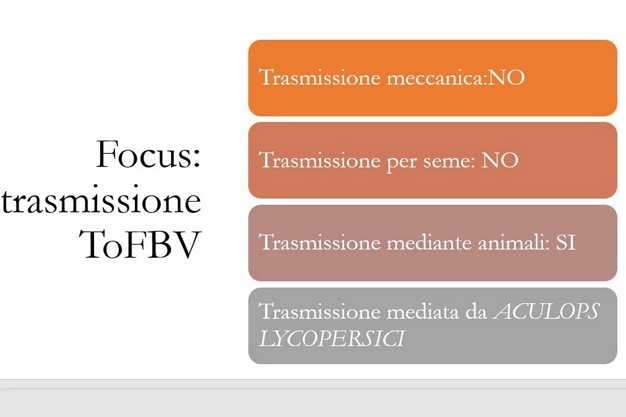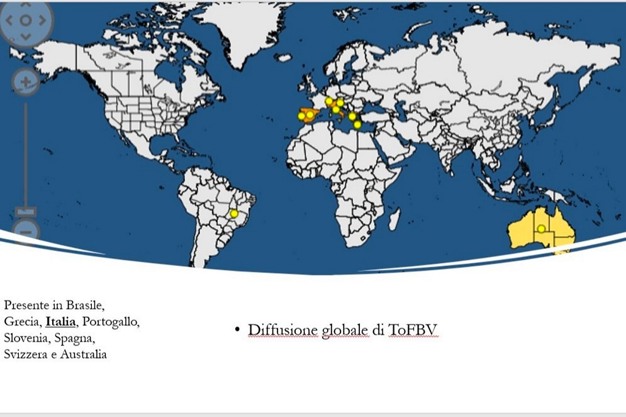There is some concern for Sicilian tomato productions as, despite the fact that they have not yet recovered from the damage caused by ToBRFV, they might have to face a new problem in the form of the "Tomato Fruit Blotch Virus" (ToFBV - Blunervirus solani), an insidious disease that can be easily mistaken for the Tobamovirus and therefore treated as such, leading technicians and producers astray. Once again, just like it happened for ToBRFV, it was virologist and professor Walter Davino who spread the news during a convention held a few days ago in Ragusa (Sicily). Davino is one of the global leading experts in the field.  How the ToBFV looks on tomatoes
How the ToBFV looks on tomatoes
"ToFBV, or Blunervirus solani, is a new disease we have found in the Ragusa territory. This pathogen was identified for the first time in 2018 in the Fondi area (Lazio) and has not affected us so far," reported Davino.
 Professor Walter Davino
Professor Walter Davino
"This is worrying, as the virus can cause quite a lot of damage. It is a peculiar pathogen as we do not know it well and, as there is little information available at international as well, there is not much we can do at the moment."
 How ToFBV spreads
How ToFBV spreads
"What we know about this virus is that it is insidious, as plants show no symptoms until the berries change their color, meaning they can no longer be commercialized. This, in turn, means the damage is total and that the entire production is lost. The other thing we know is that it spreads via a well-known mite - Aculopis lycopersici - which is widespread in Sicily."
Video interview
"I would also like to add that there are no resistant nor tolerant plants, so all we can do is follow the usual prophylaxis to contain the pathogen in our area, plus we must make every effort to find means suitable to contain the disease."
 Spreading of the virus
Spreading of the virus
The news about the presence of TiBRFV in Sicily was given in 2019, always by Professor Favino. Operators are asked not to jump to conclusions to avoid speculation.
* The images contained in this article were kindly provided by Professor Walter Davino.
